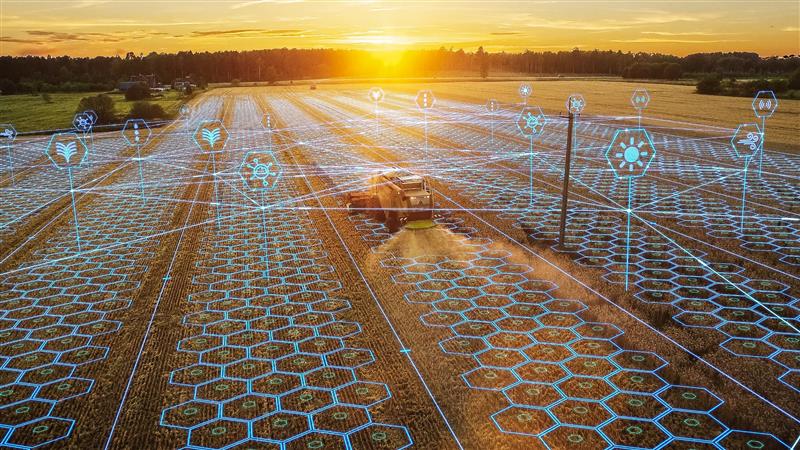
In November 2018, experts from academia, industry, and policy convened at the Federal Reserve Bank of Chicago to confront a growing agricultural crisis, arguing that integrating technology with traditional farming is a survival pillar.
Climate change and profitability pressures force farmers to adopt drones, AI, and automation to boost yields and sustain the rural Midwest economy. With widespread broadband access being the linchpin for this transformation.
David B. Oppedahl of the Chicago Fed revealed that corn and soybean yields have more than doubled over 55 years due to such innovation. In parallel, Purdue’s Karen I. Plaut highlighted severe economic urgency. For every dollar invested in rural broadband, Indiana could see a four-dollar return. In this aspect, connectivity is fundamental to enabling future data farms.
The goal is to rethink US agriculture through smarter farming and enhance the rural Midwest economy.
Climate change challenges and obstacles gave farmers the opportunity to look into innovation for solutions, such as agriculture sensors, drones, and AI altering productivity and connecting old-fashioned methods and with advanced efficiency.
Advanced Technologies and Automation in Agriculture
In this era, technology is no longer far from agriculture, instead it is now integral to the soil, machinery, and infrastructure that support it. The Chicago conference highlighted how digital technology in agriculture is changing fields throughout the US, merging data analysis, automation, and precision tools to make it more productive.
David B. Oppedahl of the Federal Reserve Bank of Chicago noted that corn and soybean yields in the Midwest have more than doubled over the past 55 years, thanks to agricultural systems technology.
Yet, while production has grown, farmers must now depend on smart farming solutions to balance efficiency with profitability. From autonomous tractors and drones to spectral imaging and soil sensors, farmers can detect irrigation needs, pests, and nutrient deficiencies faster than ever before.
Karen I. Plaut from Purdue University, pointed out that for every dollar spent on expanding rural broadband internet, Indiana could see four dollars in economic return. Her vision of networked, data-enabled farms emphasizes why the availability of broadband is at the center of how to integrate technology with traditional farming.
Adopting technology in agriculture don’t just make the process and work easier, but they also redesign entire communities. With smart farming IoT solutions enabling real-time information sharing between machinery and management systems, rural farmers are on the path to a new world defined by precision, sustainability, and resilience.
How Has Agricultural Technology Increased Human Carrying Capacity in the Past Decade?
Over the past decade, technology altered how food systems operate globally and stretched the planet’s liability to feed more people more effectively. Specialists like Keith Fuglie of the US Department of Agriculture warned declining research funding could slow down the pace, but business efforts in smarter farming and biotechnology are working to close the gap.
Firms like Corteva Agriscience are investing in smart farming precision farming platforms that help optimize seeds, reduce waste, and increase yield. The same applies to robot milking systems and satellite monitoring gear as part of a broader shift toward automation in agriculture, which not only enhances efficiency but also transforms labor demands—reducing low-skilled jobs in addition to creating demand for technology-driven posts.
Broadband and connectivity remain the cornerstones to this agricultural-digital revolution. Without internet, the benefits of smart farming equipment and analytics-based intelligence cannot extend to smaller or remote farms.
As described by Brian Whitacre, from Oklahoma State University, the greater connectivity stimulates rural economic development and gives farmers access to the same tools used in high-tech industries.
The impact technology has on sustainable farming is significant. The push towards the implementation of an automated agriculture system highlights the power of partnership, between innovation and tailor, machine and partner.
In the end, understanding how to integrate technology with traditional farming is more than a strategy, it’s a necessity to ensure economic growth, food security, and environmental balance in the incoming years.
Inside Telecom provides you with an extensive list of content covering all aspects of the tech industry. Keep an eye on our Impact section to stay informed and up-to-date with our daily articles.